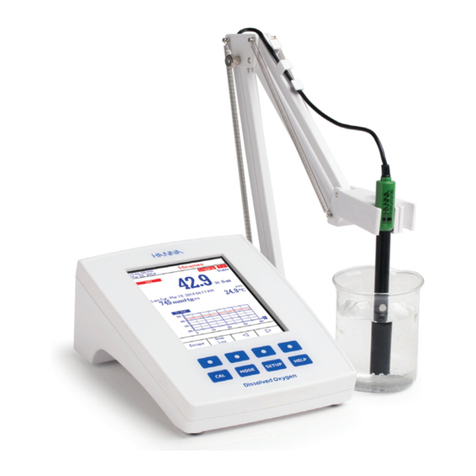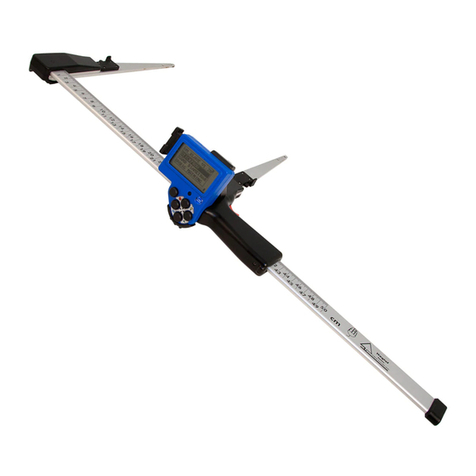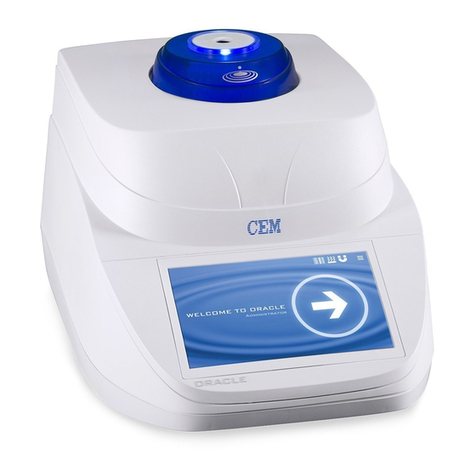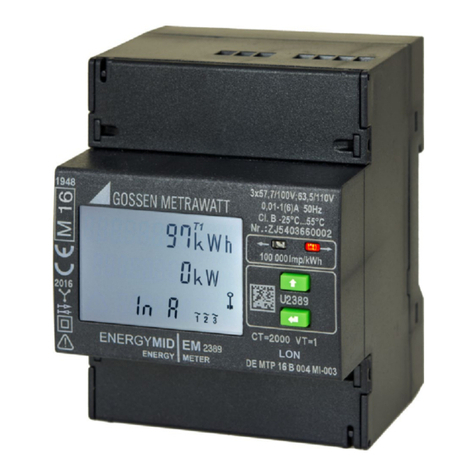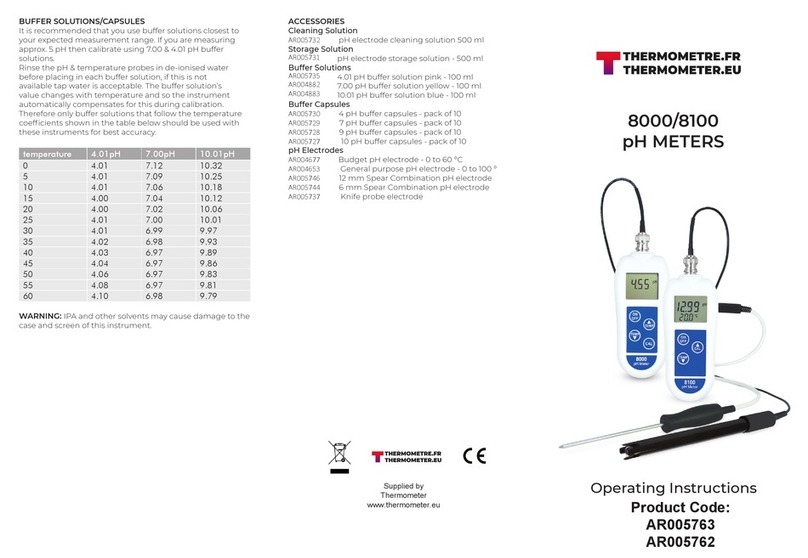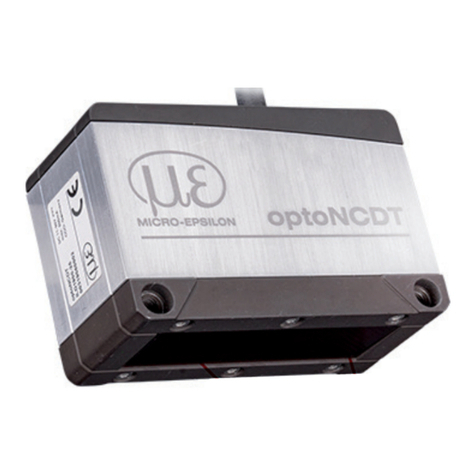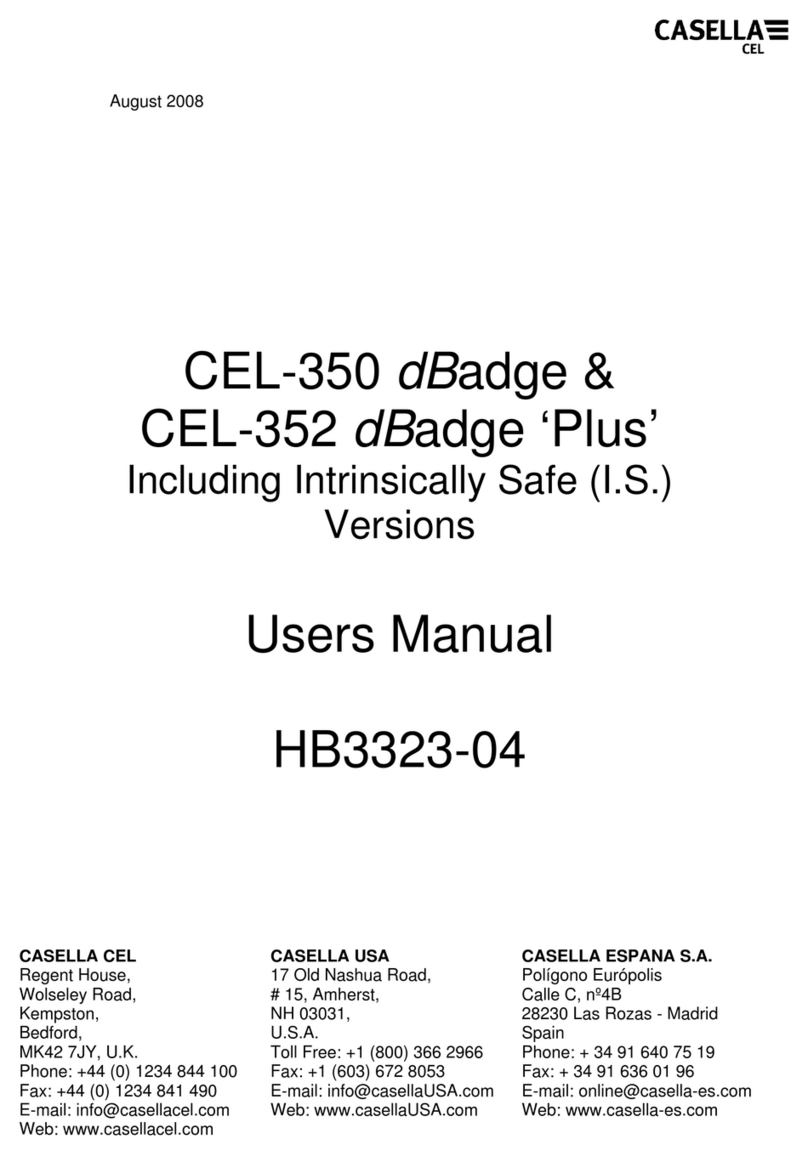Rofin SC x10 User manual

906-0002-00 Rev 9 EN 2002 Rofin-Sinar UK Ltd. ROFIN SC x10
Operating Manual
ROFIN SC x10
OEM CO2Slab Laser

906-0002-00 Rev 9 EN 2002 Rofin-Sinar UK Ltd. ROFIN SC x10
This manual is copyrighted with all rights reserved. Under copyright laws, this
manual may not be copied in whole or part or reproduced in any other media
without the express permission of Rofin-Sinar UK Ltd. Permitted copies must
carry the same proprietary and copyright notices as were affixed to the original.
Under law, copying includes translation into another language.
Please note that while every effort has been made to ensure that the data given
in this document is accurate, the information, figures, illustrations, tables,
specifications and schematics contained herein are subject to change without
notice. The most recent additions and supplementary information is given in the
Additional Information Section – Appendix 2.
Rofin-Sinar UK Ltd.
York Way
Willerby
Kingston upon Hull
U.K. HU10 6HD
Tel: 44 (0) 1482 650088
Fax: 44 (0) 1482 650022
August 2002

906-0002-00 Rev 9 EN 2001 Rofin-Sinar UK Ltd SC x10 Contents
Contents
Page
Section 1 Safety Instructions and Precautions
1.0 General Information 1-1
1.1 Laser Radiation Safety Standards 1-1
1.2 Intended Use for the Laser Equipment 1-2
1.3 Equipment Safety Standards 1-3
1.4 Training 1-3
1.5 Recommended Administrative Precautions 1-3
1.6 Laser Radiation Hazards 1-4
1.7 Fume and Vapour Hazard 1-6
1.8 Electrical Hazard 1-6
1.9 Safety Precautions 1-7
1.10 Additional Recommended Safety Precautions 1-7
1.11 Safety Warning Labels 1-8
Section 2General Description
2.0 Description of Operation of ROFIN SC x10 2-1
2.1 Laser Head Layout 2-2
2.2 Technical Specification 2-3
2.3 Cooling Water Specification 2-7
2.3.1 General Information 2-7
2.3.2 Requirements and Additives 2-7
2.4 Purge Gas 2-9
2.5 Fuses 2-10
2.6 Enquiries 2-10
2.7 Warranty Information 2-10
2.8 Warranty Shipments, Returns and Adjustments 2-11
2.9 Service and Repair 2-11
Section 3Installation and Operation
3.0 Delivery Check 3-1
3.1 Unpacking 3-1
3.2 Installation 3-1
3.2.1 Power Supply Installation 3-3
3.2.2 Water Cooling 3-4
3.2.3 Purge Gas 3-5
3.3 Electrical Interfacing 3-5
3.3.1 DC Power Supply Lamps & Enable Switch 3-9
3.3.2 RF Cable 3-10
3.4 Additional Info on RF Pulse Width & Duty Cycle 3-11
3.5 Safety Shutter Mechanism3-11
3.6 Back Reflection of the Laser Beam 3-12

906-0002-00 Rev 9 EN 2001 Rofin-Sinar UK Ltd SC x10 Contents
Section 4Maintenance
4.0 General Information 4-1
4.1 Optical Surfaces 4-1
4.2 Output Window 4-2
4.3 Optics Cleaning Materials 4-2
4.4 Cleaning Optical Surfaces 4-2
4.5 Purge Gas Supply 4-3
4.6 General Cleaning 4-3
Appendix 1 Safety Labels
Appendix 2 Additional Information

906-0002-00 Rev 9 EN 2002 Rofin-Sinar UK Ltd. ROFIN SC x10
Section 1
Safety Instructions and Precautions

906-0002-00 Rev 9 EN 2002 Rofin-Sinar UK Ltd Safety 1 - 1
Section 1 – Safety Instructions and Precautions
1.0 General Information
It is strongly recommended that any personnel who are involved with the
installation, operation or maintenance of this laser equipment should first
read and fully understand the contents of this manual and in particular
Section 1 on Safety Instructions and Precautions.
If there are any questions or doubts on any of the safety aspects of the
equipment, then do not hesitate to contact your nearest ROFIN sales or
service office or distributor for advice before proceeding.
The installation, operation, maintenance and repair of this laser equipment
must only be carried out by ROFIN service personnel or trained staff who
have received correct instruction concerning the hazards associated with
this particular equipment.
Take extensive precautions to prevent exposure of laser energy to the eye
and skin from either direct or diffusely reflected laser beams. In addition,
precautions must be taken to prevent the hazards of fire, electrical injury
and pollution.
The information and precautions given in the following sections are
extensive but may not be complete. Laser users are advised to supplement
this information with information regarding current technological advances
as they become available.
All safety critical instructions contained within this documentation
are framed with a border and printed in bold italic typeface. In
addition, the safety warning symbol shown on the left indicates that
care should be taken when working with or on the laser equipment.
Strict compliance with the safety precautions set out and referred to in this
manual and extreme care in use are essential to minimise the chance of
accidental damage to the equipment or personal injury. ROFIN does not
accept liability for any damage or injury howsoever caused or arising.
The symbol given on the left is also used on the equipment and indicates
that the user should refer to the Equipment Operator’s Manual for more
information on the safe operation or installation of the equipment.
1.1 Laser Radiation Safety Standards
a) The European standard for the Radiation Safety of Laser Products is
EN60825. The ROFIN SC range of carbon dioxide lasers are
classified as Class 4 lasers and as such, the user should appoint a
Laser Safety Officer and should be familiar with the content of
EN60825.

906-0002-00 Rev 9 EN 2002 Rofin-Sinar UK Ltd Safety 1 - 2
b) Special attention is drawn to section 3 of the EN60825 User’s Guide,
clauses 10 to 13.4.
c) The United States guidelines for the manufacture and subsequent
sale of laser equipment are governed by the Centre for Devices and
Radiological Health (CDRH). The laser safety requirements are
covered in subchapter J of the Radiation Standards, 21 CFR. This
laser product is designated solely for use as a component laser and
therefore does not meet all the requirements of 21 CFR 1040.10. In
the United States it is the responsibility of the buyer of these
components to ensure that the final system sold to an end user
complies with all the relevant laser safety requirements prior to the
sale of that system. The buyer is also required to provide a system
report filing to CDRH before the system is shipped to an end user.
d) The average output power, peak power per pulse, the pulsed
frequency, the wavelength of the radiation and other specifications for
the particular carbon dioxide (CO2) laser covered by this manual can
be found in the Technical Specification in Section 2.
This is a Class 4 (Class IV) laser product. All precautions relevant to
this class of laser product should be strictly observed. Use of
controls or adjustments or performance of procedures other than
those specified herein may result in hazardous radiation exposure.
Strict compliance with the safety precautions set out and referred to
in this manual and extreme care in use are essential to minimise the
chance of accidental damage to the equipment or personal injury.
ROFIN does not accept liability for any damage or injury howsoever
caused or arising.
1.2 Intended Use for the Laser Equipment
The CO2laser equipment described in this documentation is intended to be
used for processing materials in an industrial environment. The laser is a
source of radiation and as such forms part of a laser processing system.
The intended use of the laser is therefore determined by the type of laser
system into which it is incorporated (e.g. cutting, welding, marking, surface
working) as well as by the manufacturer’s instructions.
The use of the laser equipment for applications other than the
intended one constitutes misuse and the laser manufacturer, ROFIN,
does not accept liability for any damage or injury howsoever caused
or arising.
In addition, ROFIN does not accept liability for any damage or injury
howsoever caused or arising where the laser equipment has been
modified without the prior written permission of Rofin-Sinar UK Ltd.
Do not use the laser beam to heat foodstuffs as this may cause injury
and can produce poisonous substances, fumes or vapours.
Work on organic materials, such as wood or plastics may also be
dangerous. Before working on any material with a laser beam, ensure
that all personnel are familiar with the applicable safety precautions.

906-0002-00 Rev 9 EN 2002 Rofin-Sinar UK Ltd Safety 1 - 3
1.3 Equipment Safety Standards
The ROFIN SC range of CO2laser systems are manufactured to the
following Safety Standards:
I) The United States guidelines for the manufacture and subsequent
sale of laser equipment are governed by the Centre for Devices and
Radiological Health (CDRH). The laser safety requirements are
covered in subchapter J of the Radiation Standards, 21 CFR. This
laser product is designated solely for use as a component laser and
therefore does not meet all the requirements of 21 CFR 1040.10. In
the United States it is the responsibility of the buyer of these
components to ensure that the final system sold to an end user
complies with all the relevant laser safety requirements prior to the
sale of that system. The buyer is also required to provide a system
report filing to CDRH before the system is shipped to an end user.
II) EN60825 European Standard for the Radiation Safety of Laser
Products – Class 4 laser equipment
III) 73/23/EEC Low Voltage Directive EN60950 – Class 1 Appliance, must
be connected to an electrical earth. Note that when the laser
equipment is incorporated into other machinery, eg. a laser cutting
system, then the full machinery installation may have to conform to
EN60204 and/or EN292 (Machinery Directive EN89/392/EEC) and
any other applicable standards.
iv) 89/336/EEC Electro-Magnetic Compatibility Directive
EN50082-2 – EMC immunity for industrial environments
EN55011 – EMC emissions for equipment that include RF generators
1.4 Training
Training of installation, operator and maintenance personnel is mandatory.
ROFIN, or its authorised distributors, can provide training on the
installation, operation and maintenance of the ROFIN SC product range.
1.5 Recommended Administrative Precautions
i) Ensure that operators are given regular safety instruction (at least
once per year) and have read and understood this manual.
ii) Ensure that operators have a copy of this safety information for easy
reference.
iii) Observe all accident prevention regulations that are in force in the
work place.
iv) Attach the correct hazard warning plates and labels to the laser
equipment.
v) Ensure that untrained or unauthorised personnel do not have access
to the laser system.
vi) Ensure that the ‘laser designated area’ is properly marked out and
labelled.
vii) Combustible or flammable gases, liquids or solids can ignite when
irradiated with the laser beam. Remove any such materials from the
laser designated area.
viii) Some materials, such as metals or plastics, can give off toxic
decomposition products when processed using the laser beam.
Investigate the hazards associated with the materials that are being
processed. Professional bodies can provide this information.
ix) Ensure that all objects which may accidentally reflect the laser beam
are removed from the laser designated area.

906-0002-00 Rev 9 EN 2002 Rofin-Sinar UK Ltd Safety 1 - 4
x) Always check the safety of the laser system before beginning any
work, especially any safety shutters, beam delivery devices and
nozzle systems.
1.6 Laser Radiation Hazards
The wavelength of the output beam from a Carbon Dioxide (CO2) laser can
be in the range 9.3µm to 11.5 µm. The wavelength range is invisible to the
human eye and is in the infra-red part of the electromagnetic spectrum.
The ROFIN SC CO2 laser emits a high-power beam infra-red radiation
which is invisible, but behaves in most other respects like visible light.
The beam is powerful enough, when focused, to cut materials such as
plastic, but is potentially dangerous even without focusing.
CO2laser radiation can be absorbed by most dielectrics such as water,
biological tissue, glass and plastic and is instantly absorbed by the first
absorbent material it contacts.
CO2laser radiation can be reflected from smooth metallic surfaces, even
though they may be blackened.
CO2laser radiation can be focused with lenses in order to be useful for
cutting or marking applications. Beyond the focal point the laser beam
rapidly diverges, causing dissipation of the energy density or intensity of
the beam.
The Laser Aperture is clearly marked with a label stating 'LASER
APERTURE'. Avoid eye or skin exposure to direct or scattered laser
radiation.
The ROFIN SC laser output beam characteristics are described in section
2 (Technical Specification) of this manual.
i) Eye Protection
If laser radiation enters the eye, even after reflection from a metal
object, it can burn the surface of the eye causing permanent damage.
Because the CO2laser beam is highly absorbed by water, the cornea
and the sclera are the predominant ocular structures at risk for injury
and may suffer irreversible damage and scarring as a result of direct
or indirect exposure to the CO2laser beam. Severity of injury to these
structures depends on how concentrated or diffuse the beam is and
the length of exposure time.
PERMANENT EYE DAMAGE MAY RESULT IF LASER RADIATION
IS ALLOWED TO ENTER THE EYE EITHER DIRECTLY OR BY
REFLECTION FROM A METALLIC SURFACE DURING
PROCEDURES INVOLVING ACCESS TO THE LASER OUTPUT.
ALL PERSONNEL MUST WEAR SAFETY SPECTACLES
SUITABLE FOR USE WITH CARBON DIOXIDE LASERS WHEN
THE LASER IS IN A CLASS 4 OPERATIONAL STATE.
PERSONNEL NOT SO PROTECTED MUST BE EXCLUDED FROM
THE AREA OR ROOM CONTAINING THE LASER.

906-0002-00 Rev 9 EN 2002 Rofin-Sinar UK Ltd Safety 1 - 5
The following precautions are pertinent for protection from 9.3 - 11.5
micron (µm) wavelength CO2laser energy only.
1. As a precaution against accidental CO2laser exposure to the output
beam or its reflection, anyone within the area should wear the
appropriate protective goggles with side shields.
2. The appropriate plastic prescription glasses may be substituted for
protective goggles at the individual's own risk since they do not have
side shield protection. (Glass can be shattered by a high power
density laser beam)
3. Contact lenses and reading (half) glasses do not provide sufficient
protection.
4. Glass windows normally provide sufficient protection from CO2laser
energy, to any outside 'passer-by'.
5. Never look directly into the carbon dioxide laser light source or
scattered laser light from reflective surfaces.
6. The working area must be shielded with metal, acrylic or
polycarbonate, and should incorporate a safety interlocked door.
7. The door interlock should be used to automatically disable the laser
when the guard door is opened. In addition, the door interlock circuit
should be designed or configured such that operator intervention is
required before the interlock circuit is remade, when the guard door is
opened and then closed by the operator.
ii) Skin Protection
If laser radiation is exposed to the skin it can burn and cut the flesh
causing temporary or permanent damage.
The following precautions are pertinent for protection from 9.3 - 11.5
micron (µm) wavelength CO2laser energy only.
1. Do not place hands or any other object in the pathway of the CO2
laser beam.
2. The laser beam should never be turned on without a target to
absorb the energy.
3. Metallic objects will reflect the CO2 laser beam. Blackened metallic
objects may also be reflective to the laser beam. Objects that are
brushed or dimpled will diffuse the laser beam. Items that absorb
the laser beam will become hot.
4. In the event of an emergency (laser or non-laser related), the
laser should be shutdown immediately. Some criteria for
emergency shutdown include the following:
•Faulty shutter operation
•Water leaking from the laser or its power supplies
•Fire
•Misuse of the laser
•Unauthorised use of the laser

906-0002-00 Rev 9 EN 2002 Rofin-Sinar UK Ltd Safety 1 - 6
iii) Protection against Fire
Combustible objects which are placed in the laser beam path can be
set on fire.
1. A CO2laser can ignite most non metallic materials.
2. Never operate the laser in the presence of flammable gases or
liquids.
3. Never operate the laser in the presence of explosive materials.
4. Ensure the laser system is installed with the correct level of safety
interlocking.
1.7 Fume and Vapour Hazard
Laser induced reactions can release hazardous particulate and gaseous
matter. These by-products may be poisonous. Before working on any
material with the laser beam, ensure that all the applicable safety
standards are being followed.
The laser beam provides the user with a ‘hot’ beam that can be used as a
controlled method of heating or burning the surface of certain materials –
like a very fine flame torch.
Some materials break down chemically when they are heated and these
materials can emit hazardous fumes in the form of gases or particulate
matter eg. polyvinyl chloride (PVC) and polycarbonate.
Standard materials handbooks or the manufacturer of the material should
be contacted before attempting to process such materials with a laser.
In addition, fume extraction is recommended for removing the smoke
plume. Specialist filters can also be used to filter the fume in the workplace.
Filters must be cleaned and/or replaced in accordance with safety
regulations to prevent environmental pollution.
1. Do not attempt to process a material with a laser beam unless the
heating characteristics of the material have been fully investigated
and understood.
2. Provide a method for safely shielding and extracting the fume
produced by the laser process.
3. If you are cutting plastics, filter the cutting vapours downwards.
4. Do not cut PVC (polyvinyl chloride) with a laser beam. The
chemical heat reaction in combination with the humidity in the air
will produce hydrochloric acid. Hydrochloric acid is hazardous to
the operator and the laser system.
1.8 Electrical Hazard
Any installation, service or repair work must be undertaken by qualified
ROFIN personnel or by skilled engineers after consultation with the
relevant local ROFIN Service Department. If in doubt contact the Service
Department at the phone number given at the beginning of this manual.

906-0002-00 Rev 9 EN 2002 Rofin-Sinar UK Ltd Safety 1 - 7
1. Do not remove the covers from the laser or its power supplies.
Removing these covers will expose voltages. In addition,
removing internal covers from around the laser or its correction
optics may allow leakage of laser light.
2. The area around the laser and its power supplies should be kept
dry.
3. Never operate the laser if there is any sign of leakage of water
from the system. Call the local Service Department.
4. Do not operate the laser if the mains cable is faulty or frayed.
5. The laser should undergo routine inspection and maintenance
according to ROFIN’s recommendations, as detailed in section 4
of this manual.
1.9 Safety Precautions
The ROFIN SC range of lasers incorporate various safety features as
required by EN60825 and CDRH radiation safety standards. The end user
will be required to utilise these functions within a full system installation to
meet these safety standards. These are as follows:
i) Safety Interlocks
No sections of the laser’s protective housing can be easily opened
without special tools. The CO2 laser has no user serviceable parts
within the protective housing and does not contain any access panel
with Safety Interlocks within the meaning of EN60825 section 4.3.
ii) Laser Radiation Emission Warning Lamp
It is to be assumed that for the purpose of safety, that if the laser
emission lamp is illuminated, then laser radiation output from the
system is possible. The laser emission lamp is located on the rear
flange of the laser housing.
If the emission lamp fails during operation of the system, then an
emission lamp failure signal is provided for the systems integrator.
See section 3 of this manual for details of the signal.
iii) Safety Shutter
A solenoid driven Safety Shutter is incorporated into all ROFIN SC
systems. This allows the user to block or dump the laser output beam
with a reflective mechanical blade. There are also two position
sensors for the Shutter Open and Shutter Closed positions for safety
monitoring.
For details of the inputs and outputs required to operate the Shutter
and monitor its position, see section 3 of this manual.
1.10 Additional Recommended Safety Precautions
In addition, the end user will also be required to add the following functions
within a full system installation to meet the CDRH, EN60825, Machinery
Directive EN89/392/EEC (EN60204 and EN292) and NFPA 79 safety
standards:

906-0002-00 Rev 9 EN 2002 Rofin-Sinar UK Ltd Safety 1 - 8
i) Emergency Shut Off Switch
It is recommended that the end user adds the facility for an
emergency shut off switch for the laser equipment to the control panel.
This switch should be of the red mushroom type with force make/force
break contacts and approved to the relevant electrical standards.
ii) Power On/Off Key Switch
It is also recommended that the end user adds the facility for a power
on/off key switch, such that the system can be switched off and the
key removed when the laser in not in operation.
iii) Manual Restart
It is a statutory requirement of 21 CFR 1040.10 that the laser output
should not be restored automatically if the mains power fails or an
interlock is broken and then reset. The end user must provide for a
manual restart mechanism under these circumstances.
1.11 Safety Warning Labels
In accordance with the requirements of EN60825, appropriate warning
labels are positioned in specific locations on the system to indicate
conditions under which the user could be exposed to laser radiation. In
addition, for systems supplied into the USA the product identification
label carries a statement on the requirements of 21 CFR 1040.10.
Except for the laser warning symbol, which has no written words, all
labels are written in the language specified by the user. Reproductions
of these labels and their positions are given in Appendix 1.
The applicable year for EN60825 is given in Appendix 1.

906-0002-00 Rev 9 EN 2002 Rofin-Sinar UK Ltd. ROFIN SC x10
Section 2
General Description

906-0002-00 Rev 9 EN 2002 Rofin-Sinar UK Ltd General Description 2 - 1
Section 2 – General Description
2.0 Description of Operation of the ROFIN SC x10
The ROFIN SC x10 laser is a high-frequency excited, diffusion-cooled CO2
Slab Laser, designed for industrial use as a cutting, welding or marking
tool.
Figure 2.0-1 shows the principle of operation of the Slab laser. A laser gas
discharge (active zone) (8) is established between the waveguiding
electrodes (9) by a radio frequency voltage (5, 10). The rear mirror (7) and
output mirror (3) form the optical resonator. The laser beam (1) is produced
within the resonator and is emitted through a window (2). Water (4, 6) is
used to cool the electrodes.
Figure 2.0-1 Diffusion Cooled Slab Laser Layout
Due to the nature of the electrodes in a slab laser, the emitted laser beam
diverges at different rates in the x (free space) and the y (waveguide)
directions. In order to make the beam round it is necessary to reshape the
output beam using reflective correction optics. This can be achieved by
using single optical elements or a combination of cylindrical and spherical
optics.

906-0002-00 Rev 9 EN 2002 Rofin-Sinar UK Ltd General Description 2 - 2
Depending on the configuration of the resonator, there may also be
diffraction effects due to the output optic of the resonator. This can produce
secondary lobes on the main output beam that need to be scraped or
filtered out. This is achieved by the use of a spatial filter.
After beam correction and spatial filtering the beam quality from a slab
laser is ideal for any material processing operation that requires excellent
mode quality and stability.
2.1 Laser Head Layout
Figure 2.1-1 shows the layout of the inside of the laser head housing. After
exiting the Laser Tube (1), the laser beam is turned through 45 degrees by
a plane turning mirror and is directed into the Beam Correction Module (2).
Inside the Beam Correction Module, a second plane turning mirror directs
the laser beam towards an angled spherical reflective element, which
corrects the shape of the beam to make it round and also focuses the
beam into the spatial filter. The spherical mirror then deflects the beam
towards a plane mirror, which directs the beam into the Spatial Filter
Module (3).
The Spatial Filter scrapes off any unwanted secondary lobes on the laser
beam. After exiting the Spatial Filter the beam enters the Safety Shutter
Module (4). The Safety Shutter is used to block off any unwanted laser
output using a rotary solenoid and a reflective blade. When in place, the
Safety Shutter deflects the beam into a thermal dump.
Figure 2.1-1 Laser Head Layout (not to scale)
When the laser beam exits the Safety Shutter Module it is directed towards
the Final Output Window (5). Depending on the specific requirements of
the customer, this transmissive element can be either a plane window or a
lens.
The Laser Tube, Spatial Filter and Shutter Module are all water cooled and
the water flow is monitored by a Flow Switch (6).

906-0002-00 Rev 9 EN 2002 Rofin-Sinar UK Ltd General Description 2 - 3
2.2 Technical Specification
a) Laser Head Details
Laser Tube: Sealed Cavity, RF excited, Diffusion
Cooled, Slab Carbon Dioxide Laser
Excitation Frequency: 81 MHz
Tube Lifetime: > 10,000 hrs continuous running
Output Power: 100 Watts
Guaranteed at 20oC coolant temperature 400µs
pulse width and 50% duty cycle. Allow 0.8% per
oC power decline for coolant temperatures up to
40oC.
Power Range: 5 – 100 Watts
Peak Power: 60 – 230 Watts
Power Stability: ± 7%
Pulsed Frequency: up to 10kHz (for full modulation depth)
(higher frequencies for quasi-CW operation)
Pulse Energy: 5 – 230mJ
Pulse Rise/Fall Time: <45µs
External Dimensions(mm): 791.0(L) x 170.7(W) x 223.6(H)
Weight: 32.0kg
b) Laser Beam Characteristics
M2(K) <1.2 (>0.8)
Beam Divergence: <2.5mrad (full angle)
Beam Ellipticity: <1.2:1
Beam Pointing Stability: <200µrad (half angle)
Beam Diameter (1/e2): 7.5 ± 0.5mm
For standard beam correction
Wavelength: 10.4 – 11.2µm
Polarisation: Linear
(perpendicular to base of laser head)
c) RF Power Supply
Output Frequency: 81MHz
Output Power: 1kW average (2kW peak)
Input Voltage: 48V dc ± 1%
Input Current: 35 Amps (max RMS)

906-0002-00 Rev 9 EN 2002 Rofin-Sinar UK Ltd General Description 2 - 4
Input VA: 1.7kW max
External Dimensions (mm): 227.5(L) x 371.0(W) x 80.0(H)
Weight: 9.5kg
Figure 2.2-1 External Dimensions for the Laser Head
(note: all dimensions in millimetres)

906-0002-00 Rev 9 EN 2002 Rofin-Sinar UK Ltd General Description 2 - 5
Figure 2.2-2 External Dimensions for the RF Power Supply
(note: all dimensions in millimetres)
d) RF Cable (connects between the Laser Head Module and RF Power
Supply)
Cable Type: T-COM 600
Cross Sectional Diameter: 15mm
Static Minimum Bend Radius: 152mm – for a static cable
Dynamic Minimum Bend Radius: 400mm – for a moving cable
RF connector torque setting: 4Nm (2.95 ft-lb)
Standard Length: depends on customer order. In
general, specific lengths are available
from approximately 1 to 10m.
For more information on RF cable properties and lengths refer to the
relevant sales data sheet which is available from your local
ROFIN/Distributor sales office.
e) DC Power Supply
Output Voltage: 48V dc ±1%
Output Current (max): 40A
Input Voltage: 200 - 240 V ac ±10%
single or bi-phase
(must be connected to ground (earth))
Average Input Current (max):< 10A RMS
Peak Input Current (max): 16A

906-0002-00 Rev 9 EN 2002 Rofin-Sinar UK Ltd General Description 2 - 6
Typical Power Consumption: 2.0kW at 230V ac input
(400s pulse width and 50% duty cycle)
Power Factor: >0.9
External Dimensions (mm): 371(W) x 270(D) x 160(H)
Weight: 13.5kg
(15.0kg with mounting bracket 105-0077-00)
(15.3kg with mounting bracket 105-0076-00)
Figure 2.2-3 External Dimensions for the DC Power Supply
– show with bracket 105-0077-00
(note: all dimensions in millimetres)
f) Coolant Requirements
Heat Load: 2000 Watts max.
Coolant flow rate: 4 litres/min (minimum)
Coolant temperature: 19 – 25oC (± 1oC from coolant setting)
Coolant pressure: > 2.2 bar (32 psi)
< 6.0 bar (88 psi)
In line filter: 100µm
Connections: 8mm OD tubing
or barb fitting for 3/8” ID tubing
For more detailed information on the Cooling Water Specification
see section 2.3 below.
g) Environmental Specification
Ambient temperature: +5 to +40oC (+41 to +104oF)
Storage temperature*: -10 to +70oC (+14 to +158oF)
Humidity: 10 to 85% relative humidity
(non-condensing)
Altitude: < 3000m
Table of contents
Other Rofin Measuring Instrument manuals
Popular Measuring Instrument manuals by other brands
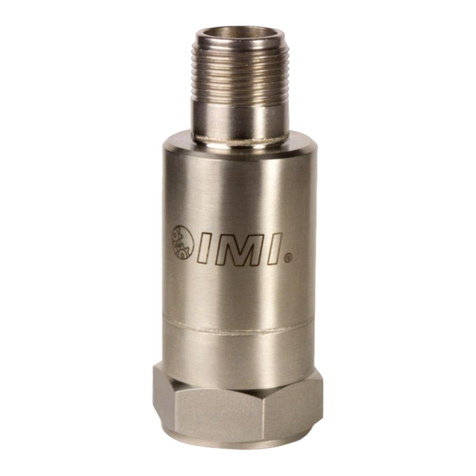
PCB Piezotronics
PCB Piezotronics IMI SENSORS 645B01 Installation and operating manual
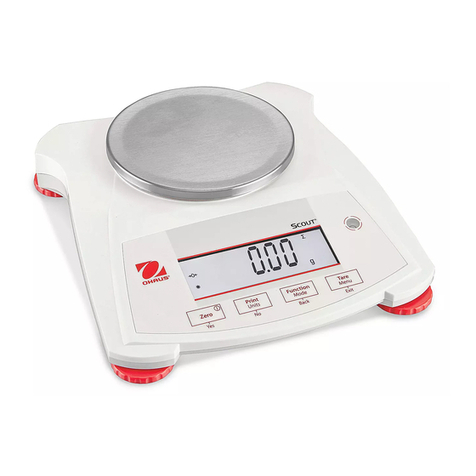
U-Line
U-Line OHAUS SCOUT H-5848 manual
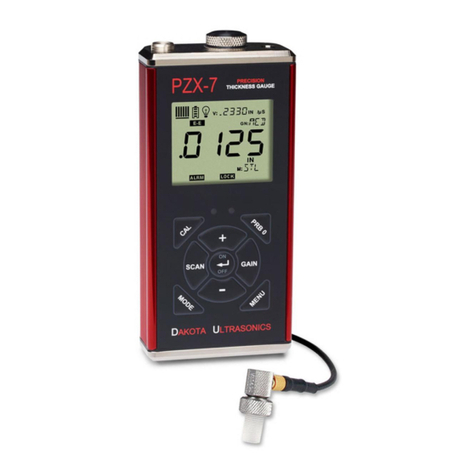
DAKOTA ULTRASONICS
DAKOTA ULTRASONICS PZX-7 Operation manual

Thermo Scientific
Thermo Scientific 48iQ instruction manual

ENDA
ENDA EPA242 manual
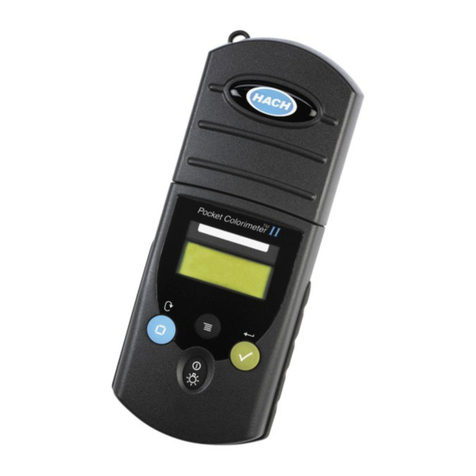
HACH LANGE
HACH LANGE Pocket Colorimeter II user manual

